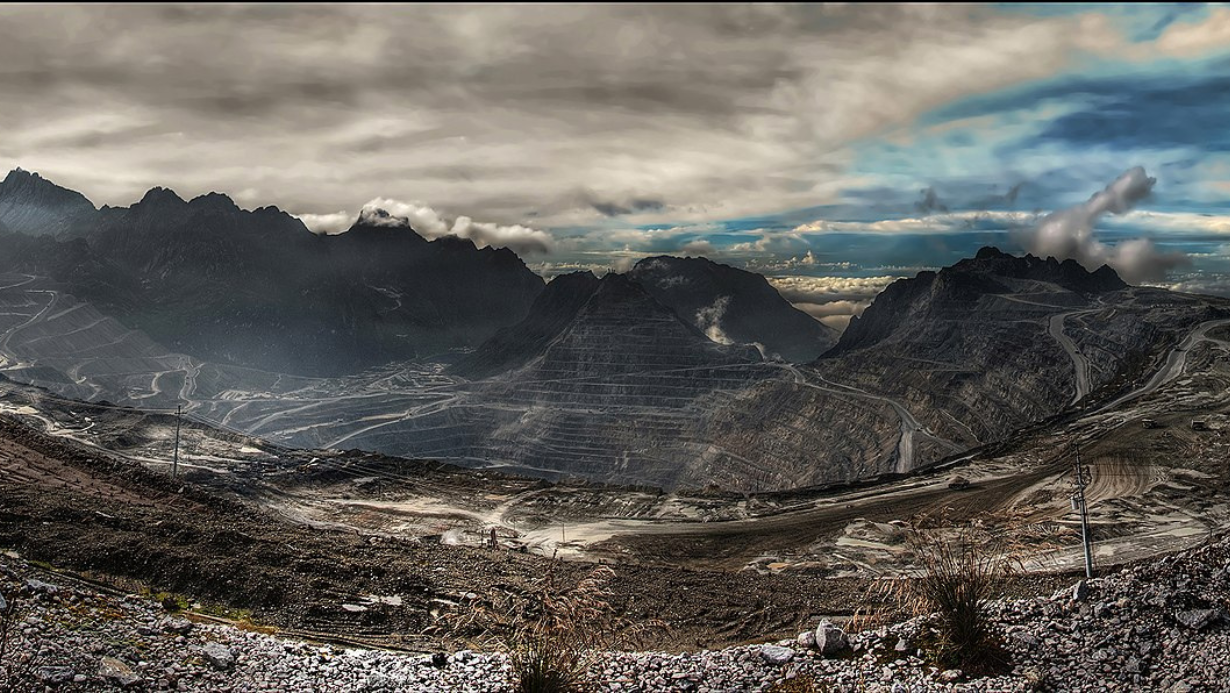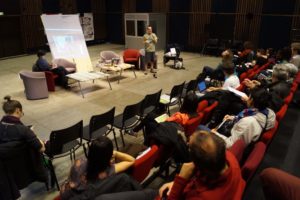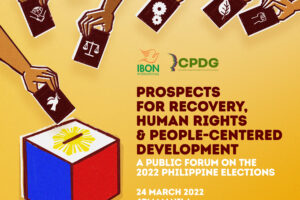This piece was originally published in two parts by südostasien, a German magazine focused on amplifying voices on and from Southeast Asia on economic, political, and cultural issues. Access the first part of the article in German here. Read the second part in German.
By Jennifer del Rosario-Malonzo and Rodolfo Lahoy
In 1971, Uruguayan writer Eduardo Galeano published the book Open Veins of Latin America, a chronicle of colonialism and imperialism in the region. The image of an open vein is literal, in veins of ore, minerals, among other natural resources, that are being extracted and exported out of Latin America and into the United States and Europe. An open vein also denotes bleeding, as in a body. In this case, a continent being bled dry.
More than fifty years later, rich countries acknowledge that development work has to change. The global South should have a greater voice over how economic support could improve their lives. But those in power are still overlooking the dominant economic system that has shaped development.
Southeast Asia’s open veins
Today, open veins are still a familiar reality in the global South. In late 2022, a UN Conference on Trade and Development press release said: “developing countries are financing developed ones.” A similar story is contained in the findings of a 2021 research by academics. Now covering our century, the study by Hickel, Sullivan, and Zoomkawala found that, from 1960 to 2017, USD 152 trillion’s (EUR 142.5 trillion) worth of resources has been drained from the global South.
Southeast Asia also has its open veins. In the same study, USD 11 trillion (EUR 10.3 trillion) of wealth has been drained from Southeast Asia and the Pacific. Vietnam, Indonesia, Malaysia, and Thailand are among the 10 developing countries who lost the most wealth.
What do the trillions mean? In the case of the region, lost trillions meant missed opportunities to improve peoples’ lives, to fund healthcare, public services, wage increases, responses to disasters and extreme weather, and poverty eradication, especially in a world hit by multiple crises.
Crisis ripples in development conversations
Amid today’s challenges, the problems of our economic systems have been exposed. The continuing drain of wealth shows that we live under a system that creates winners and losers. More specifically, a world where a few live off the toil of the majority. The past years have triggered social unrest—amid rising costs of living; inflation and decreasing value of wages; and pandemic-era state violence.
Development policy-makers admit that the current global development agenda at the United Nations, the Agenda 2030, and its 17 sustainable development goals (SDGs), are off-track seven years into the deadline.
Unrest has been visible even to donor states. Aid donors, mandated to use public money to address poverty and inequality in the global South, are slowly compelled to talk about power. In 2023, a report produced through the OECD-DAC, the bloc of the world’s major aid donors, referred to the challenges of “colonial legacies, top-down decision making, power imbalances.” Influential superpowers in Southeast Asia also have their say. For USAID, the US government’s development aid agency, support these days should lead to a Southeast Asia that is free to chart “its own development path.”
A sign of the times: Locally led development and rebalancing power in international decision-making are growing large in official rhetoric. But development co-operation has yet to fully account for economic domination exerted on regions such as Southeast Asia, and the losses arising therefrom.
In the study of Hickel et al., losses come from unequal exchange, or when Northern corporations and states pay less for labour and resources in the global South than what they would have done so if these originated from the global North. Where did the lost, often irreplaceable, wealth go? The US, followed by Japan and Germany, have been the top three countries that gained.
The study also demonstrates that the wealth drains increased during the era of “structural adjustment”. These were the decades after the 1980s when US-led institutions, the International Monetary Fund (IMF) and the World Bank Group (WBG), influenced Southern countries to align with US priorities of privatising state assets, deregulating economies, and liberalising their markets to foreign capital. In this way, the global South was deeply integrated into the world economy in ways that benefit dominant interests, contributing to the imbalances that current aid donors now claim to address.
Can locally-led development be achieved while retaining politico-economic structures that channel wealth from the developing towards the developed countries?
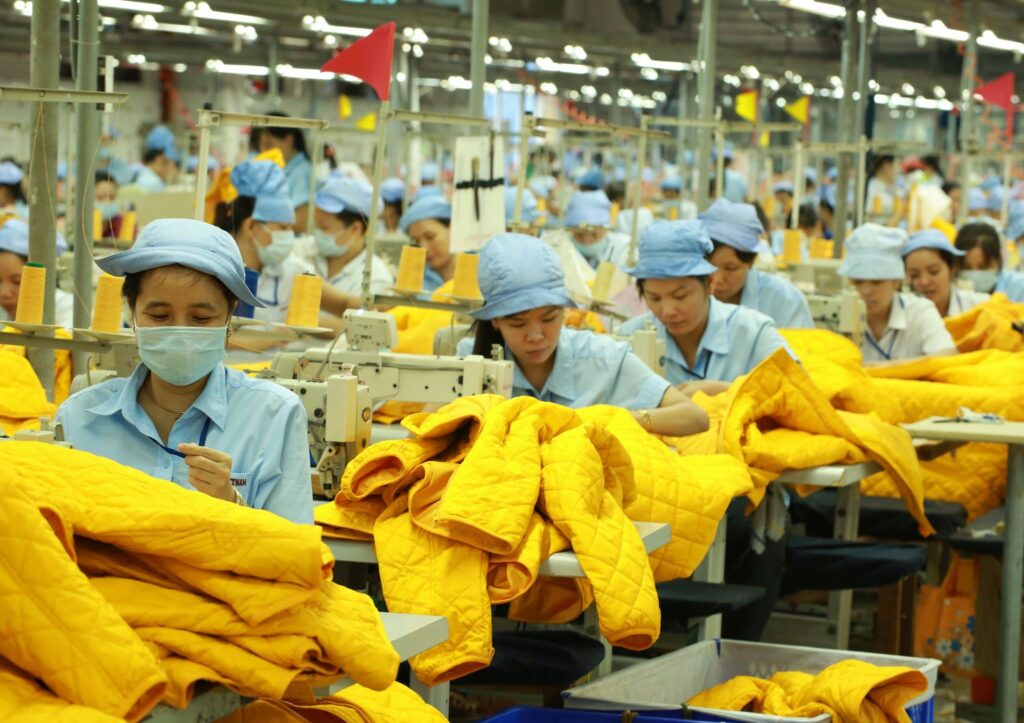
Photo: Textile workers in Vietnam / ILO
Poor wages and platform workers
In Southeast Asia, minimum wages are lower compared to most Northern countries. For instance, monthly minimum wages in the European Union in 2021 could be as low as EUR 332 in Bulgaria to as high as EUR 2,200 in Luxembourg. Compare this with official monthly wages in Southeast Asia, which could range from USD 103 (EUR95) in Myanmar to USD 330 (EUR307) in Thailand or in Manila, the capital of the Philippines. This is further exacerbated by the gender wage gap in the region, with women earning around 30 to 40% less than men.
In the Philippines, a country without a national minimum wage, workers’ wage rates will decrease the farther they live from the capital. But even those in Manila are also in a dire situation. In the advent of digitalisation and pandemic layoffs, many entered app-based service jobs, such as food and parcel delivery. Treated as a “partner” instead of as an employee, these platform workers are deprived of rights even on paper.
One study documented cases of incomes as low as USD 4 per day (approx. USD 120/EUR 112 a month) – a measly amount compared with the total sales of Grab, Southeast Asia’s leading platform corporation of USD 501 million (EUR 470 million) in early 2021.
Copper and corporations
Aside from wealth that comes at the expense of workers’ rights, wealth is also flowing out of Southeast Asia through corporate extraction. In West Papua, US-based company Freeport-McMoran has operated one of the world’s largest gold and copper mines since 1967. Today, Freeport foresees increasing demand for copper, because of its use in electric vehicles. “The copper we produce is essential to new and existing technologies that will support global efforts to decarbonize,” the company said in 2022. After decades of rampant mineral plunder by the US corporation, the Indonesian government has in recent years increased government shares and taxes from the mine.
But at what cost? From 1990 to 2019, Freeport extracted 33 billion pounds of copper and 53 million ounces of gold from its Papua site. People in West Papua greatly suffer from poverty, alarming child poverty and malnutrition. Freeport operations is a product of colonial history in the country, and the Indonesian government’s militarised occupation against West Papuan self-determination. Mining operations continued despite the pandemic and crises, and might extend until 2041. Amid continued West Papuan armed resistance, calls to shut down the mine continue.
Resource extraction is not limited to West Papua. Under the dominant system, whole countries have been shaped to depend on trading raw materials. Agricultural, mineral, and fuel goods make up around 60%—more than the majority—of Myanmar as well as Indonesia’s total exports.
State violence and sustainability
In other cases, communities lose control over their resources amid the ongoing push for supposed sustainable infrastructure. In the Philippines, a wave of dam projects is threatening Indigenous Peoples’ lands. These include projects in the Cordillera region, northern Philippines, such as the China-funded revival of the Chico River project, once funded by the World Bank in the 1970s and later suspended due to valiant local opposition. Down the map is another China-funded project, the Kaliwa Dam. Further south, in the belly of the archipelago in Visayas, there is the South Korean-funded Jalaur Dam. All these claim to support the country’s needs, in water supply and energy; all threaten the ancestral domains of the Indigenous communities and are proceeding despite their resistance.
In Indonesia, the Mandalika Urban Tourism Infrastructure Project, exclusively funded by the Asian Infrastructure Investment Bank (AIIB), claims to support “sustainable tourism.” Since 2021, it has been criticised by UN experts due to human rights violations.
Like mining in West Papua, state violence shroud these infrastructure projects. The AIIB-backed Mandalika involved militarisation and intimidation of communities. The Philippines’ Jalaur Dam is being continued despite the killings of Indigenous Peoples who opposed it. Under the administration of Ferdinand Marcos Jr., activists who oppose such dams in the Cordillera region also resist false legal charges.
And despite US-China regional tensions, a cooperative relationship prevails between the AIIB and the traditional multilateral development banks. In Indonesia, eight of 11 AIIB projects since 2016 are co-financed with the US-led World Bank and the Japan-led Asian Development Bank. The Mandalika project is an exception in being purely financed by the AIIB.
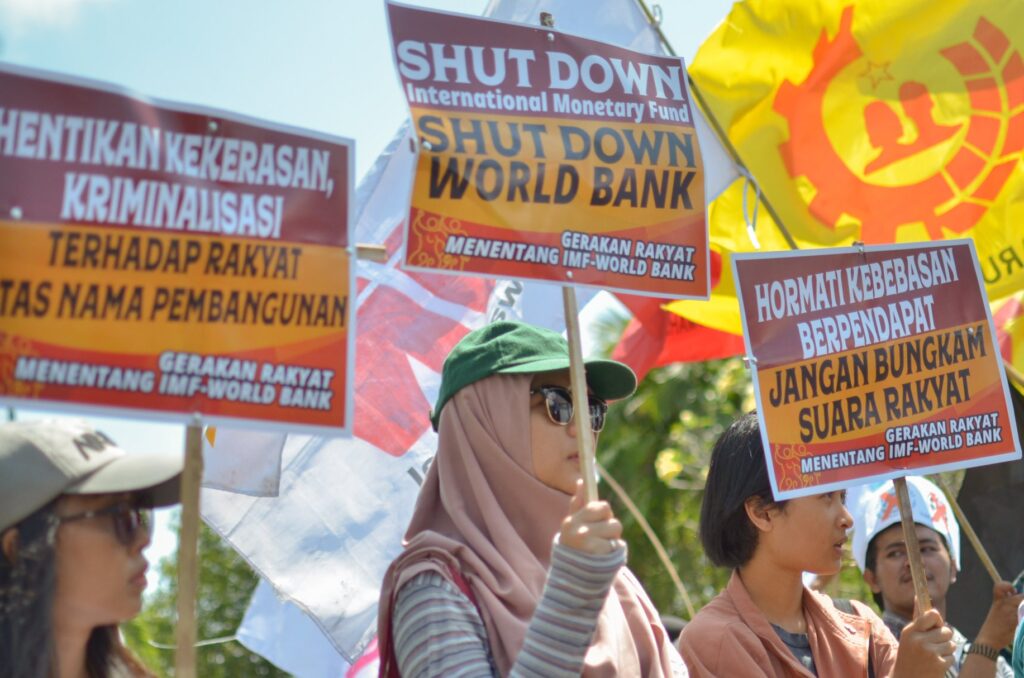
Photo: Protest during the People’s Global Conference against the IMF-World Bank in Bali / October 2018
A dollar in aid against USD 14 lost wealth
These country realities show the immense challenges that hinder people’s participation in real economic decisions. They are moments in a history of cumulative loss, where opportunities to address peoples’ needs have been taken away.
Furthermore, these realities contextualise an issue still often-heard in development conversations: that of finance gaps. The story goes: the public money to finance growing demands for climate, health, infrastructure, among other needs, is simply insufficient. Aid flows and taxes will not fully cover the gap.
The finance gap question asks where to get the money. But the countries’ loss of wealth raises an even bigger question: Why are countries unable to generate enough financing for their own development?
Calculations in Hickel et al. show that, in recent years, for every USD 1 of aid, USD 14 (EUR 13) flows out in wealth drain. This increases to USD 30 (EUR 28) if including profits sent back to Northern countries and illicit flows. And as Southeast Asia’s veins are drained by powerful interests, governments rely more and more on funds coming from outside sources. External sources of finance, such as debt, private capital, become additional channels for extracting wealth.
Foreign debt burdens of the global South swelled during the pandemic. With governments now cash-strapped, they pass the burden to the people through new taxes on goods that they use. Then the US-led IMF looms to advocate belt-tightening measures. Cut public service budgets, attract more foreign investors to earn more dollars for debt payments to private creditors—austerity are “fiscal consolidation” measures in IMF-speak.
Countries are told to rely on private capital. Eager to profit from “bankable” infrastructure projects, trillions in financial markets could be mobilised for development. This already comes with the risks of green-washing and the instability of finance capital as they divest at the whiff of economic woes and crisis.
Wealth and power coincide. As citizens foot the bill in new taxes, Southeast Asia’s political elites try to reduce their tax payments. Officials—from a current Philippine senator, to former Malaysian finance ministers, to a Cambodian justice minister—were found to have channeled wealth to secretive, offshore territories where tax rates are low. Public wealth is also stolen in corruption, such as in Malaysia. In the Philippines, capturing the presidency can create openings to keep wealth previously stolen under one of the world’s most corrupt, US-backed military dictatorships.
Apply pressure to stop the bleeding
Regarding open veins: Southeast Asia is being bled by interests that are, to extend the metaphor, vampiric.
These issues urge us to ask a key question: Are development conversations and co-operation working to stop, slow down, or just sustain the outflows of wealth and resources from our countries?
Wealth drains reveal that financing development might be less about filling the “financing gap” per se, but rather about creating changes that strike at the reason behind the losses.
To pursue genuine sustainable development today means to uphold rights and ecological sustainability. These require reckoning with systems and policies that enable the bloodletting of Southern countries. It should be an option for debts, especially when loans did not benefit public interest, to be cancelled or repudiated. Austerity imposed for debt payments is incompatible with public interest. Greater regulation of corporate activities is essential, including halting harmful and unsustainable activities.
Effective development co-operation entails listening to Indigenous voices and communities when they reject harmful projects. It also requires a more open ear to Southern social movements that oppose the country operations of institutions with a history of economic interventions, like the IMF and the World Bank. Policies of militarisation and repression, nowadays still hiding behind “counter-terrorism” rhetoric, are unfit for an agenda of heeding local demands.
On the other hand, immediate needs require increasing taxes on the rich and big business as one of the steps to redistribute wealth. Donor countries’ fulfillment of their commitment, to channel aid worth 0.7% of their gross national income, is a promise long overdue.
Civil society organisations and social movements have long argued that the current economic system and development model are generating obscene inequalities and ecological crisis – realities the pandemic further exposed. A formal space to discuss systemic reforms, such as a Fourth UN Conference on Financing for Development with the democratic participation of Southern countries and organisations, has been advocated by civil society as a step forward.
Still needed in spurring change are the roles of peoples’ organisations in their countries. “Recovery of the resources that have always been usurped is recovery of our destiny,” Galeano says. Once people’s victories have stopped wealth drains, communities can truly chart development paths that are their own. #
